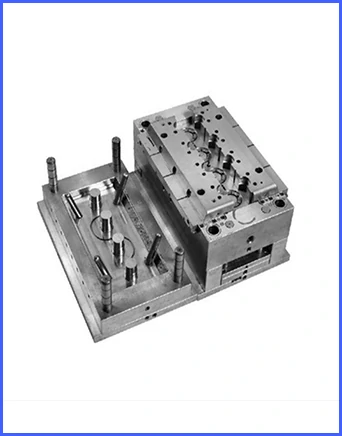Time to read: 6 min

Tooling Metals for Injection Molding
The selection of tooling material is a critical decision that precedes the molding process. The durability of the mold is paramount, given that injection molding is often used for mass production of identical parts.
Steel Molds:
- Advantages: Longer lifespan, resistance to abrasion, suitable for high-volume production.
- Applications: Ideal for abrasive plastics and large production runs.
Aluminum Molds:
- Advantages: Lower cost, shorter lead times, ideal for low to medium-volume production.
- Applications: Perfect for prototyping and when quick turnaround is needed.
The choice between steel and aluminum depends on factors such as production volume, type of plastic used, part design complexity, and project budget.
Key Properties to Consider in Injection Molding Materials
Choosing the right material for injection molding involves considering the intended use of the part. Does it need to be strong, tough, or elastic? Should it have high or low friction? Does it require chemical or heat resistance?
Properties to Consider:
- Strength: Materials like POM, Nylon, and PEEK offer high strength.
- Rigidity: POM, PMMA, PET, and HIPS are known for their rigidity.
- Flexibility: ABS, LDPE, and PVC provide the needed flexibility.
- Heat Resistance: PET, PEI, PP, and PPS can withstand high temperatures.
- Chemical Resistance: LDPE, HDPE, and PP are resistant to various chemicals.
- Affordability: LDPE, HDPE, PP, and PVC are cost-effective options.
Injection Molding Materials: A Deep Dive
Injection molding is compatible with a variety of materials, primarily thermoplastics, which are ideal due to their ability to soften when heated and solidify upon cooling.
Common Injection Molding Plastics:
- ABS: Known for its toughness and versatility.
- POM: Offers high strength and rigidity.
- Acrylic: Provides transparency and impact resistance.
- HDPE: Known for its chemical resistance and durability.
- Nylon: Famous for its toughness and chemical resistance.
- Polycarbonate: Offers high impact resistance and clarity.
Material Selection for Specific Injection Molded Parts
The choice of material can vary based on the part's application:
- Containers: PC, LDPE, HDPE, and Polystyrene are preferred for their chemical resistance and clarity.
- Electrical Components: PET, PEI, and TPE are suitable for their insulation properties.
- Bearings: POM, Nylon, PET, and PPS are chosen for their fatigue resistance.
- Valves: POM and PET are commonly used due to their chemical resistance.
- Automotive Components: ABS, PC, and PET are popular for their ability to meet the demands of automotive environments.
- Toys: ABS, Polystyrene, and PVC are selected for their impact resistance and affordability.
Adding Color to Injection Molded Parts
Color is a crucial aspect of many injection molded parts, and there are several methods to achieve the desired hue:
- Compounded Colors: Raw materials that come pre-colored and mixed with pigments.
- Solvent Coloring: Involves using a pigmented oil mixed with a solvent, applied as a spray before molding.
- Dry Pigment Mixing: Combines colorless pellets with dry pigmented powder in a hopper.
Conclusion
Injection molding offers a wealth of material options, each with its unique properties and applications. By understanding the characteristics of different materials and how they align with your project's requirements, you can make an informed decision. For expert guidance and top-quality injection molding services, consider partnering with experienced providers like Unofactory. We offer a comprehensive range of materials and can help you find the perfect match for your project.




